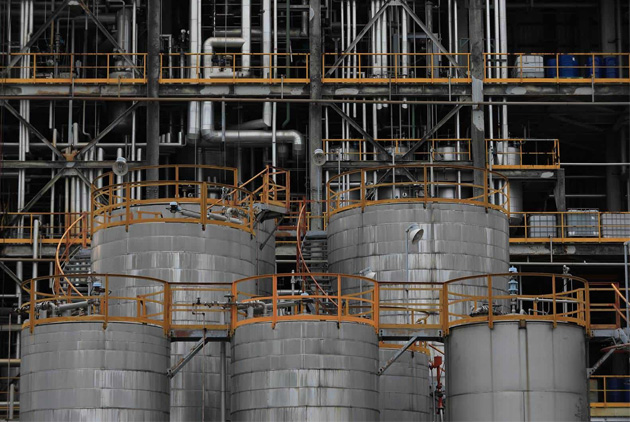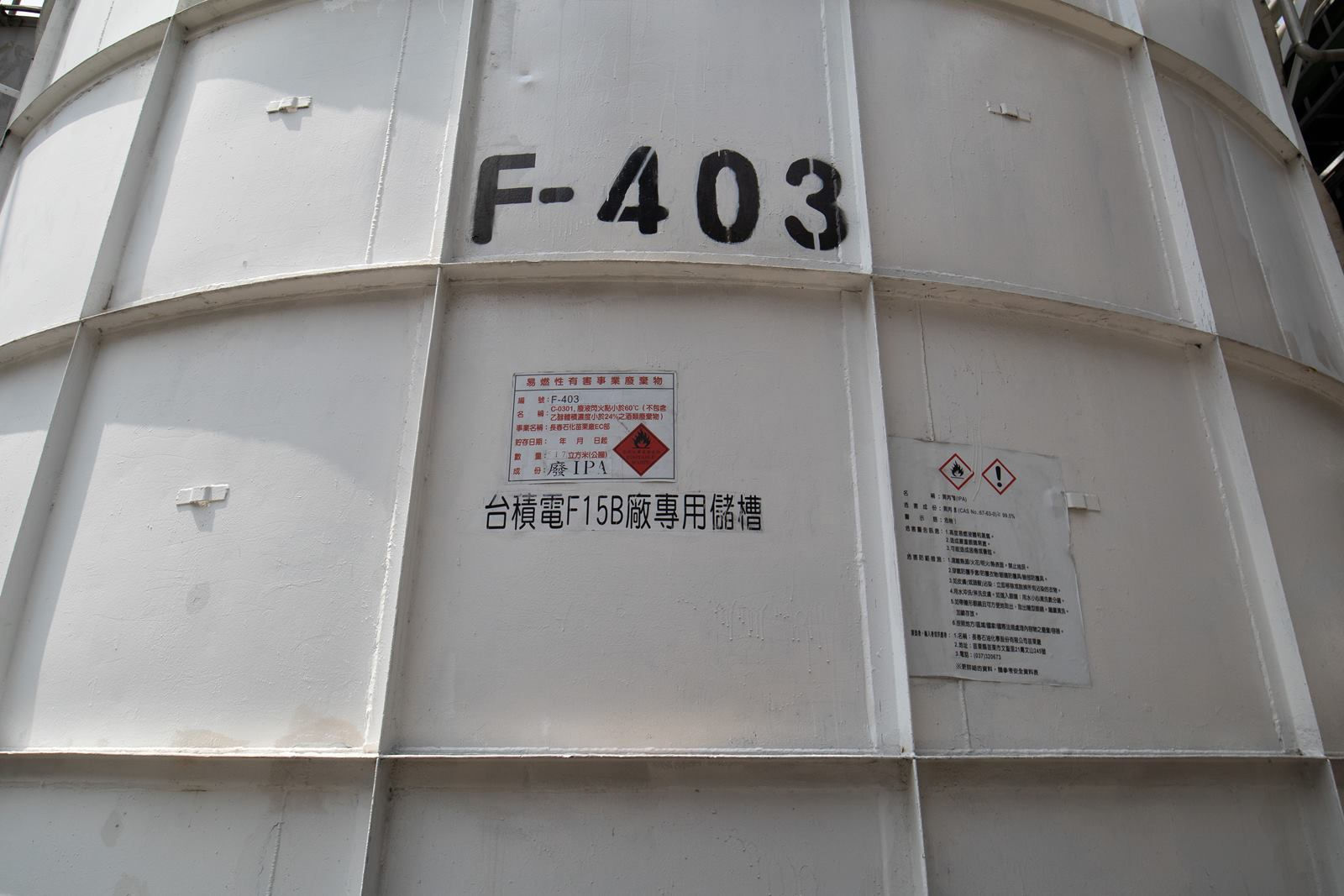Boosted by TSMC, Taiwan’s Old Petrochemical Plants Attract Japanese Capital

Source:Chien-Tong Wang
Japanese chemical giants such as Tokuyama, Shin-Etsu, and Mitsubishi Gas Chemical are investing in Taiwan, even in the old Dashe Petrochemical Industrial Park in Kaohsiung. The reason? Taiwan’s semiconductor foundry business is on the up and up.
Views
Boosted by TSMC, Taiwan’s Old Petrochemical Plants Attract Japanese Capital
By Kuo-chen Luweb only
The old smokestacks stick out like dry branches, and the pipelines intertwine like gnarled roots. Yet the defunct Dashe Petrochemical Industrial Park in Kaohsiung has recently attracted many Japanese visitors. They want to invest and renew the place. The reason may be in the smartphones we all use.
In September, Japan’s Tokuyama Corporation, one of the world’s top vendors in the semiconductor chemical sector, made a joint announcement with the Formosa Plastics Group (FPG). They are each pitching in half the costs to form a joint venture called Formosa Tokuyama Advanced Chemicals Co. (台塑德山精密化學), investing a total of NT$2.4 billion to demolish an old assembly line in Kaohsiung’s Linyuan District and build a new plant. As early as next September, they will begin producing the electronic cleaning solvent IPA, mainly used to clean electronic equipment in semiconductor foundries. Advanced production processes such as 5nm and 3nm will be their focus.
In October, Japan’s Shin-Etsu Chemical Co. announced it will build a plant in Taiwan to produce photoresist compatible with extreme-ultraviolet (EUV) lithography technology. Mitsubishi Gas Chemical is also rumored to be constructing a factory in Taichung.
Kuo-Wei Huang (黃國維), project manager in charge of promoting high value-added petrochemical industries at the Material and Chemical Research Laboratories (MCL) of the Industrial Technology Research Institute (ITRI), says petrochemical businesses in Dashe are working with Japanese companies to fire up old assembly lines and recycle chemicals that were used to treat semiconductors. In this way, Dashe can not only produce the solvents used in foundries, it can become part of the circular economy of the semiconductor chemical sector.

(Source: Chien-Tong Wang)
Booming Semiconductor Chemical Sector Returns Investment of 2.4 Billion in 3 Years
Taiwan’s booming business opportunities are what’s attracting the swarm of Japanese investors.
Originally, Taiwan consumed 34,000 tons of IPA a year. Ten thousand tons were produced locally by the LCY Chemical Corp. Tokuyama’s plants are Japan’s Yamaguchi Prefecture. It sells about 20,000 tons to Taiwanese companies such as TSMC each year through sub-assembly plants in Hsinchu and Yunlin.
But the old way of producing in Japan can no longer keep up with the demands of Taiwanese semiconductor companies. Jason Lin (林健男), Chairman of FPG, says, “In order to respond to demands from Taiwanese semiconductor companies, Tokuyama needs to have a second source. FPG’s advantage lies in its reliable supply of propene; it is the reason why these two companies have decided to work together. In addition, Tokuyama estimates that Taiwan’s demand for the electronic cleaning solvent IPA will grow to 82,000 tons by 2025; the CAGR is 15.8%.”
Business is booming and the cash is flowing. The new plant owned by Formosa Tokuyama Advanced Chemicals Co. is slated to be completed next September. Production will begin in December. It is expected to make NT$600 million a year.
In other words, it will only take three years and two months to make back the initial investment of $2.4 billion. Most petrochemical plants need 10 to 15 years to make their money back. It is a good business where you can make your money back thrice as fast.
Year-round, 24-Hour Uninterrupted Service
But there are also hidden challenges. Firstly, as the demand for semiconductor foundries grows, their vendors also need to expand rapidly to maintain a steady supply.
Secondly, supply needs to be ever-more responsive. With the chemical plant in Japan, if there is a spike in demand, the vendor can do little to help make sure the production process continues smoothly.
To use the semiconductor chemical provider Chang Chun Group as an example, their plant in Miaoli has over 500 chemical tank trucks designated for the transportation of semiconductor chemicals. At any given hour, there are five or six trucks on the road. They run six shifts a day--24-hour, year-round.
In the Chang Chun Group’s Miaoli plant, there is a storage tank marked “15B”. This means it belongs to the semiconductor companies, not Chang Chun. Not only are the chemicals being provided on demand, they’ve even reserved a storage tank just for semiconductor clients.
Building the Cradle-to-Cradle Full Circle
One last key point. One day Suhon Lin (林書鴻), chairman of the Chang Chun Group, was leading a tour of the Miaoli plant. Inside a conference room, besides his own staff, half of those present were TSMC employees, discussing how to achieve CSR goals by building a new closed-circuit, fully circular economy.

(Source: Ming-Tang Huang)
Chang Chun not only makes chemicals, it also recycles chemical wastes from TSMC. They process it and return it to TSMC to be used again. This forms a closed-circuit, circular economy between the vendor and the client.
In the past, chemical wastes and used solvents were carted off to special waste treatment companies. Now, the original supplier can make it as good as new so the client can reuse it. This is what’s called a cradle-to-cradle design.
Needless to say, it’s a difficult process. To use the EIPA produced by FPG and Tokuyama’s recent joint venture as an example, if the petrochemical plant produces 82,000 tons of chemicals, the foundry needs to dilute it with water ten times the amount before it can be reused in the production process. 82,000 tons becomes 820,000 tons. That’s enough to fill 382 swimming pools or 41,000 trucks. Line these trucks up head to tail, and you will have a convoy over 400 kilometers long, just about enough to go from one end of Taiwan to another.
This is why the Japanese must come invest in Taiwan. If production remains in Japan, large quantities of chemical wastes will have to be hauled from Tainan to the docks, where they will be shipped off to Japan, and then moved with trucks again from harbor to factory. All the energy spent in transportation goes against the principle of the circular economy.
Not to mention, many of these chemicals are highly dangerous. If they touch the skin, it could be fatal within five minutes. There is no cure or antidote. Examples include highly-concentrated developer solutions. A simple circular economy can help lower the risks to a minimum.
A Supplier War is Brewing Between Japan and Taiwan
Because of this, Japanese companies are coming to Taiwan to invest or look for partners. A supplier war is brewing between the two countries.
Taiwan’s traditional petrochemical companies used to have the advantage of being on-location. They used it to spur their transformation from conventional plastic products to more profitable semiconductor chemicals. Examples include the Chang Chun Group and the LCY Chemical Corp. Though Japanese and other foreign companies control the world’s most advanced formulas and processes, Taiwan is slowly catching up to Japan. Now that Japan has come to invest in Taiwan, they may well become competitors to Taiwan’s maturing petrochemical industry.
A complete circular economy is part of the ESG objectives set up by industry leaders such as Apple, Google, and TSMC. Not only is carbon reduction necessary, recycling is also a must; the amount of waste should be minimized. It is an unavoidable trend. It is breathing new life into old petrochemical plants.
The smokestacks and pipelines may be the same, but the products and profits are drastically different.
The face of Taiwan is changing as a result. Not only is demand for these chemical products high, more are coming in than are shipping out. The booming semiconductor industry is reshaping Taiwan’s economy in more ways than meet the eye.
Have you read?
♦ Looking for Eco-friendly PET Bottles? Call Taiwan
♦ Taiwan Needs More than TSMC
♦ What Korea Is Doing Right… and Taiwan Is Not
Translated by Jack Chou
Edited by TC Lin
Uploaded by Penny Chiang







